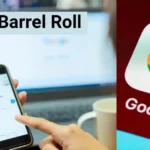Just a decade ago, video content did not constitute more than 53% of downloads and uploads. But today, things have completely changed. Now, it makes up more than 80% of traffic on the web.
In the domain of the internet, two important terms are IPTV and OTT. Both of them entail the distribution of video content over the web. It is done via the IP protocol. However, both differ considerably. They also provide different services.
If you are feeling confused about IPTV vs. OTT, we’ll explain all about them here.
IPTV Vs. OTT – How Do They Differ
IPTV is an internet-based protocol television. This digital TV system gives you access to on-demand and live video through the internet. It delivers this content over an ISP network, WAN, or LAN. IPTV provides content in a controlled manner. Some examples of IPTV providers are YouTube, Hulu, and Roku.
OTT is an alternative to satellite or cable television. It provides video content over the internet. But this content does not need a service TV provider. In simple words, OTT provides content via the internet. This is done so when you request for the same. So, this content suits the requirements of different users.
Here are some major points that will make the differences between IPTV vs. OTT clear.
- Viewing experience
IPTV offers much scope for customization. It combines video, pictures, and television with the internet. You can pick the content you desire whenever you want. Features like VOD, rewind, and pause make up for personalized streaming.
A great way to control your viewing experience through IPTV is through a media player like Smarters Pro. When you install the IPTV Smarters Pro, you can watch TV series, live channels, and much more. This feature-rich media player has a clean interface that facilitates quick search. Smarters Pro works on most Android devices and lets you tailor your viewing experience.
Contrarily, the performance of OTT depends on the speed of your internet connection. You can stream if you have adequate bandwidth. OTT platforms do not let you stream the content whenever you need, such as live-streaming sports. You also cannot access cable-only shows.
- The workings of IPTV and OTT
Another crucial point of difference between IPTV vs. OTT is how they work. IPTV uses IP or internet protocol to deliver video content to you. On your request for a particular video, the content from various servers is sent over. This content is in the form of data packets and is dispensed over the web.
In contrast to IPTV, there are no distribution circuits in OTT. The content to you is given via unicast. It is delivered upon your request. Typically, content providers deliver OTT content. They do so using an open network. OTT services are based on public internet connectivity. Any individual is able to access them.
- The pricing structure
The next major difference lies in cost. When comparing IPTV vs. OTT, you will notice that OTT is more affordable. These services come with a yearly or monthly subscription charge. Some subscription packages can be as low as $8. So, in effect, you can subscribe to many services but pay less than the traditional cable package.
The cost of an IPTV subscription is more than OTT. You will find various price packages based on what you want. If you desire a larger range of content, the price will go up. There are some affordable packages. But their content is limited. Another reason that increases IPTV costs is integration with other services. These include the internet and phone.
- Types of IPTV and OTT services
A close comparison of IPTV vs. OTT also includes their common categories. IPTV has the following types:
- VOD – It lets users choose the desired content from a giant library. They can stream it whenever they want.
- Time-shifted IPTV – It lets you control your streaming. This is done with features like pause and fast forward. Timeshift is a crucial feature you get when installing the IPTV Smarters Pro. With it, you can stream a live program from the start on the media player, even if you join late.
- Live IPTV – Live IPTV lets you stream live events. This includes news updates, sports matches, and the like.
- Hybrid IP – Hybrid IPTV integrates VOD and live TV. Thus, it offers better streaming.
OTT services do not have different categories. Instead, OTT has four chief monetization models. These include:
- AVOD – It lets the provider’s users stream for free. Revenue accrues by selling advertising space to other companies.
- TVOD – Here, customers make only a one-time purchase to use specific premium content.
- SVOD – In this, the business owner sells the subscription access to their videos online. They do this for an annual or monthly fee.
- SVOD + TVOD – In this hybrid model, the provider uses one-off transactions and recurring subscriptions. It lets them serve both their short and long-term customers.
5. Accessibility and equipment
Accessibility and equipment are other areas of comparison between IPTV vs. OTT. You can download various OTT apps anywhere, anytime. It lets you stream the show you want on any device. The only requirement is an internet connection.
But with regards to IPTV, the service is limited to only the devices in your house. It operates in a closed network. To use it, you need to connect it to your set-top box and router.
OTT does not need any external hardware. You just need an app to make the service work. There are some OTT services with their specific devices. But that becomes necessary only in the absence of a smart TV.
Final Thoughts
IPTV and OTT are two major ways in which videos are delivered online. This article has looked closely at IPTV vs. OTT. These are the major areas where both these protocols differ from one another. When you know the difference between both, it will become easy to pick the best option. Thus, you will take the right steps to enhance your viewing experience.
You may also read:
Top 10 Streameast Alternatives to Watch NBA, NHL, MLB, UFC Free Sports










